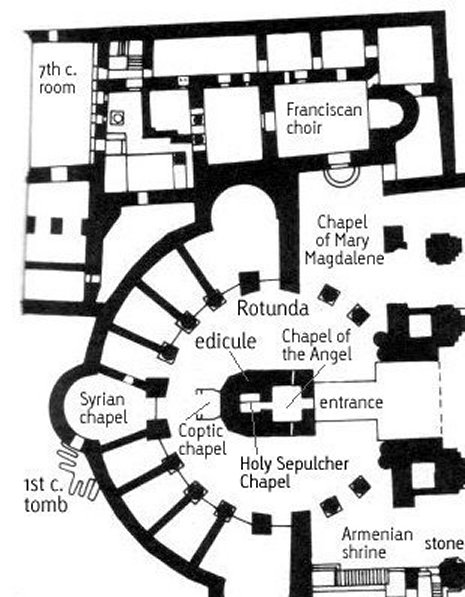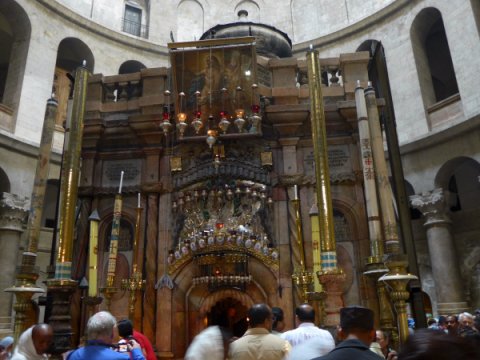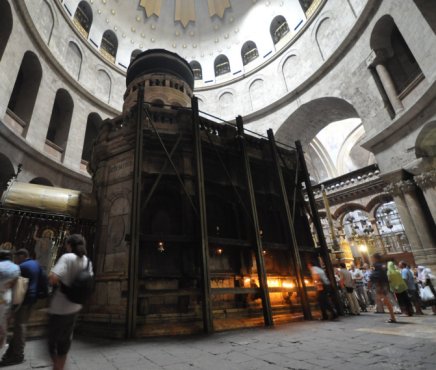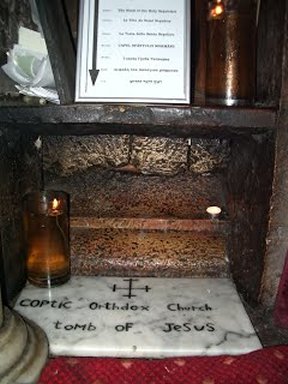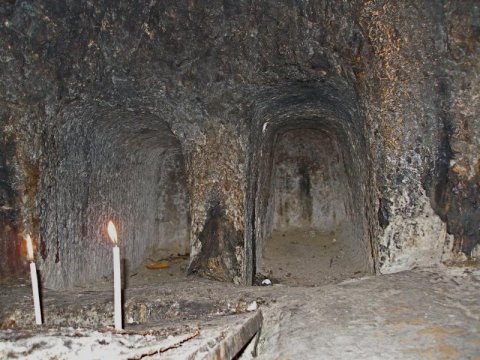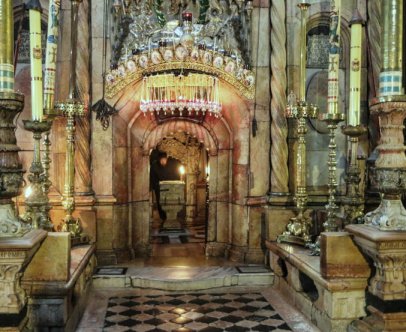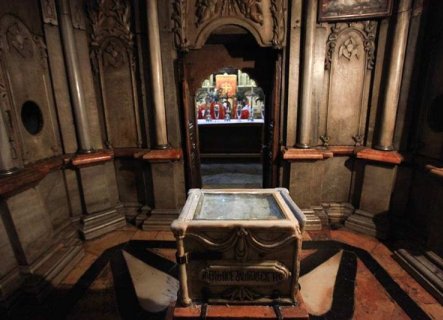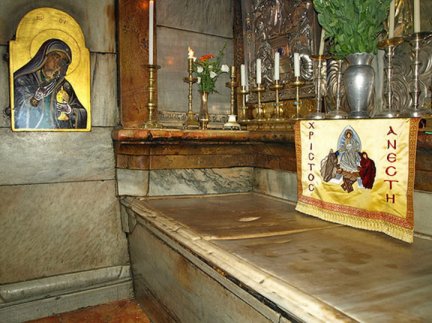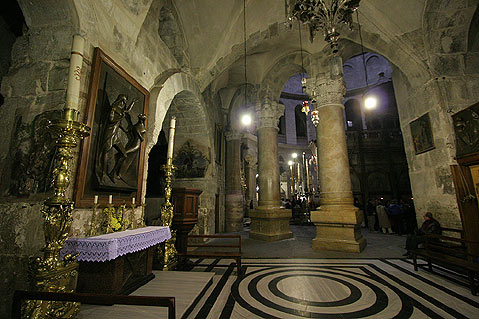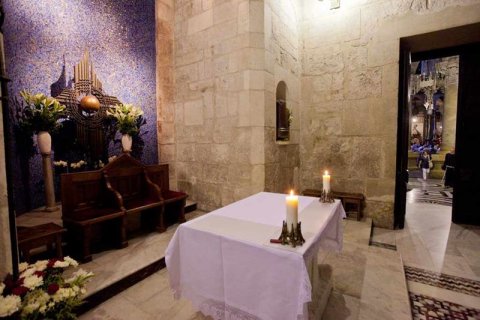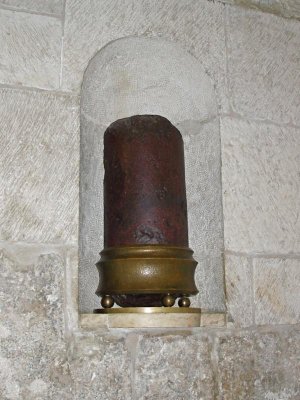|
The Holy Sepulchre in Jerusalem |
|
|
|
|
| The large rotunda retains the layout of the church of Constantine, though the area outside the pillars was originally an ambulatory, which is now divided up into rooms for the use of the various Christian denominations. The main feature, and the main focus of the church, is the aedicule enclosing the tomb of Christ. The front of the aedicule, where the entrance to the tomb is located, is impressive; the side view is less so. |
|
|
|
|
| The history of the aedicule is extraordinarily complex: for a comprehensive account, I highly recommend The Tomb of Christ by Martin Biddle. It is a rock-cut tomb, carved out of the hillside, faced with decorative stone and surmounted by a cupola. Most of what is visible is the result of an early nineteenth-century rebuild following a fire. It has been crumbling away for many years, but, sadly, no-one can agree on what to do about it. The iron girders visible on the picture above right were bolted on to the structure to stop it falling down in the 1940s, during the period of the British Mandate. The dome of the rotunda has been restored: what you see below dates from 1997, and is attractive and in keeping. | |
|
|
|
| To enter the tomb of Christ you will need to join the queue. This snakes around the aedicule and can be very long, so get there early. While you are waiting, note the two chapels at the rear. The Coptic Chapel, dating from 1573, is attached to the rear of the aedicule. Under the altar, and rarely revealed, is a stone claimed to be the place where Christ's head lay. | |
|
|
|
Opposite the Coptic chapel is the Syrian Orthodox or Jacobite chapel, sadly very run-down, but understandably so under present circumstances. The first century tombs that lead off from here are claimed to be, with no evidence whatever, those of Joseph of Arimathea and Nicodemus. They are interesting in showing what an early tomb was really like. |
|
|
|
|
| Once you have reached the head of the queue, you will be allowed in through the entrance shown below for your brief visit to the tomb of Christ. First you will enter the room known as the Chapel of the Angel. In the pedestal at the centre is what is said to be part of the stone that sealed the tomb. From here you will move into the tomb itself. The marble slab was installed in the fourteenth century to protect the original rock shelf. | |
|
|
|
|
|
|
| To the north of the aedicule is the Franciscan area of the church. First is the chapel of Mary Magdalene, which commemorates the moment known in art as 'Noli me Tangere', touch me not, where the Magdalene mistakes the risen Christ for a gardener. The view below shows the aedicule in the background. |
|
|
|
|
| Beyond the Magdalene chapel is a further chapel, named on the plan above as the Franciscan Choir but also known as the Chapel of the Apparition, celebrating the non-biblical legend of the appearance of the resurrected Christ to his mother. The photograph on the right below shows what is claimed to be part of the column where Christ received the flagellation. | |
|
|
|
| Beyond this chapel is the Franciscan monastery, normally not open to the public. The space described on the plan as a '7th century room' is also known as the Hall (or chapel) of the Crusaders, and is used as a chapel for Franciscan pilgrims. | |
